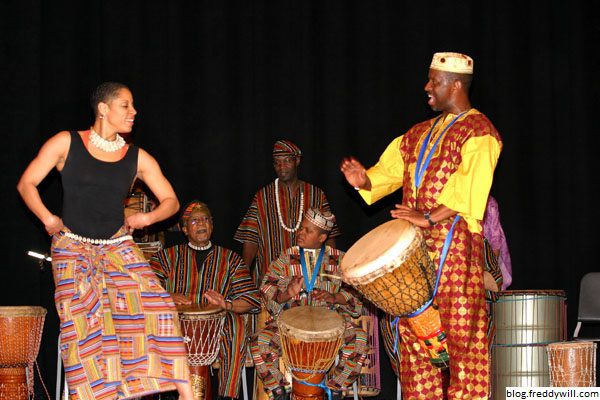A Submersion Into African American Folk Music
by: Audra Davison
Folk Music Elements
One key element of folk music is the polyrhythms, which is the switching or overlapping of phrases and rhythms played or sung. This relates to the call response style of folk music, where a soloist makes a musical statement that is answered by another aspect of the music. Other important elements of folk music are the banjo (a stringed instrument with a long neck) and the djembe (an African drum). These two instruments amongst others like the xylophone brought about the various kinds of rhythms and tones that are characteristic to African American folk music.

More About Folk Music

Primary Performers
In Africa, many people sung when they worked in groups. And after the Atlantic Slave Trade to America, this tradition did not stop. In slavery, group work, during the creation of railroads, cutting of wood, harvesting, and picking cotton was accompanied by sometimes improvished lyrics and rythms that are known as work songs.

Impact on Society
And during slavery, songs were not just sung to accompany their work. Folk music was their way of not only communicating to one another, but it was also a tool used to express themselves or even their feelings towards the society that they lived in. There were protest songs, which were indirect satirical songs used to express the slaves’ disdain for their masters and their state of oppression. And even more importantly, some of these songs were used to give instructions for slaves who wanted to runaway and seek freedom.

Commodification
Commodification is the transformation of art into an object or commodity. In the 1800s, Europeans degraded African American folk music through the popular minstrel theater. It was established to entertain Europeans by mocking the culture people of African descent. And it is important to note that folk music was a key aspect of African American culture.

The Stealing of African American Culture
Through acculturation, Black folk music was adapted by Americans. During the time period of slavery, Europeans learned the music of different African countries. And, once in the New World, Americans were exposed to African American folk music. However, notice that there is an emphasis on this fact that it is African American folk music, (which was the original folk music). Without this indication, the words “folk music” are often associated with aspects of white American culture. This pattern can also be seen in the two very similar genres of, Rhythm’n’blues, an African American music genre, and Rock’n’roll which is often associated with a white audience.
Influence on Future Genres
ln a way it seems like early African American folk music is the first type of music that people of African descent can really hold on to as far as cultural music is concerned. For some African Americans, when it comes to tracing down their ancestry, it does not start in a specific country in Africa. Instead, it begins on a slave boat that was being transported from Africa to North America. And, this is where the early African American folk music was derived. Protest songs, creole songs, and work songs along with the combinations of the different elements of folk music like the bass and the clap in the djembe or the juxtaposing nature of polyrhythm, have served as a foundation for future African American music genres such as Blues, Rhythm’n’Blues, Jazz, and Hip-Hop.

A Summary of My Opinion
I am glad to have taken this submersion into my own African American history. I’ve learned just how our struggles influenced our music and gave it a deeper meaning. African American music, with all of its genres, is the product of centuries of acculturation and shows the real fight and wisdom our ancestors had within them. And this is truly inspiring.
.


